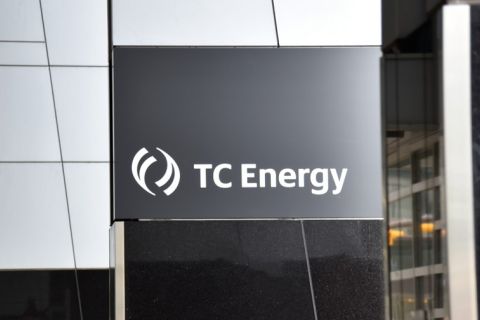U.S. President Donald Trump is stoking the possibility of Saudi Arabia and Russia negotiating oil output cuts as the coronavirus outbreak hammers demand.
Trump said April 2 he had brokered a deal between the two, but made no offer to reduce U.S. output, and benchmark Brent oil futures surged 21% in a record one-day rise.
Below are analysts’ views (in alphabetical order):
ABN AMRO, Hans Van Cleef, Senior Energy Economist
- “We think that the high stake political poker games will continue and that it will also be hard to come to an agreement this time.”
- “It would be impossible for Russia and Saudi Arabia to balance a drop in demand of this magnitude by themselves and they may want to wait for a better momentum. This means that they may want to see other producers act too or to see global demand to pick up again.”
- “Even if there is a new production cut agreement possible next week, it will probably fall short of the expectations build by Trump and will not come close to the number of demand fallout expected for April.”
Commerzbank
- “Saudi Arabia will probably demand big cuts in production from both Russia and the U.S. [whose oil industry currently appears hardest hit by the crisis]
- Any [voluntary] cut of 10 million bbl/d or more will be difficult to implement, and as such is illusory.”
- “In the U.S., it may only be the state of Texas that would have a legal basis for reducing output to order.”
- “Although the discussions about possible cooperation between the oil-producing countries may be able to support the oil price at the moment, we believe that the reality on the oil market is much more gloomy.”
Goldman Sachs
- “Given the size of the current demand hit of 26 million bbl/d and growing signs that isolation policies are being extended globally, such output cuts are in our view necessary rather than voluntary.”
- A deal is “still a long way off” and even if it is reached, its implementation would be “delayed and gradual” and “the impact of the cut wouldn’t be material for a number of weeks at least.”
- Even cuts of 5 million bbl/d from levels in the first quarter of 2020 by core OPEC members and 2 million bbl/d from the U.S. Lower-48 region and “accelerated declines elsewhere” would not change a likely global oil surplus of 9 million bbl/d this quarter.
JBC Energy
- “It will take time to convene the meeting and there is no guarantee that it will bring any success, at any rate not to the extent that Trump claims.”
- “A 10 million bbl/d cut would require substantial non-OPEC participation.”
- Fully addressing the demand fall “is a Herculean task that has very little chance of working unless Saudi Arabia and Russia shut in their entire crude production—an extremely unlikely scenario.”
Morgan Stanley
- “While headlines indicate new coordinated supply cuts are possible [potentially including the U.S.], this is unlikely to ‘fix’ near-term oversupply.”
- “Moreover, a near-term return to production cuts still seems unlikely, and we are skeptical that such a large coalition could be put together.”
- “The demand decline will be 5x the loss during the financial crisis.”
Rystad Energy, Bjornar Tonhaugen, Head of Oil Markets
- Markets are right to treat the U.S. President’s tweets and statements regarding 10 million or 15 million bbl/d in production cuts “with skepticism.”
- “The question for the oil market right now is whether we will have 10 million bbl/d of voluntary production cuts in the second quarter or forced production cuts. That could be due to full supply chains of oil, where shut-ins are forced, as there will be nowhere to physically put the oil after it leaves the ground.”
Standard Chartered, Paul Horsnell and Emily Ashford, Analysts
- “We do not believe an end to the oil price war is imminent; the road to agreement may be a long one ...Even if a deal could be done today, our forecasts imply that storage will still fill to maximum in May.”
- “Our estimate of global excess supply in April is 21.8 million bbl/d and we expect the May excess to be 19.5 million bbl/d.
- Even if Trump’s putative deal could be done today, and came in at a 15 million bbl/d in May, the inventory build from March to end-May in our model would be 1.15 billion barrels, enough to take spare storage close to maximum.”
UBS
- “We remain skeptical that producers can credibly commit to such large cuts, and expect prices to come under pressure again.”
- “The challenge in cutting is that Saudi Arabia refuses to carry the cut burden alone; it expects OPEC and its allies [OPEC+] to help, as well as other countries like the U.S. and Canada.”
- “We see oil demand now down by about 20 million bbl/d year-over-year in second-quarter 2020.”
Recommended Reading
Early Startup of Trans Mountain Pipeline Expansion Surprises Analysts
2024-04-04 - Analysts had expected the Trans Mountain Pipeline expansion to commence operations in June but the company said the system will begin shipping crude on May 1.
TC Energy's Keystone Oil Pipeline Offline Due to Operational Issues, Sources Say
2024-03-07 - TC Energy's Keystone oil pipeline is offline due to operational issues, cutting off a major conduit of Canadian oil to the U.S.
TC Energy’s Keystone Back Online After Temporary Service Halt
2024-03-10 - As Canada’s pipeline network runs full, producers are anxious for the Trans Mountain Expansion to come online.
Pembina Pipeline Enters Ethane-Supply Agreement, Slow Walks LNG Project
2024-02-26 - Canadian midstream company Pembina Pipeline also said it would hold off on new LNG terminal decision in a fourth quarter earnings call.
Enbridge Announces $500MM Investment in Gulf Coast Facilities
2024-03-06 - Enbridge’s 2024 budget will go primarily towards crude export and storage, advancing plans that see continued growth in power generated by natural gas.



